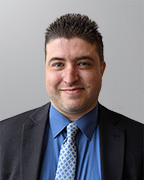Nissim: I Want a Second Opinion … and Maybe a Third Opinion, Too
Tuesday, December 24, 2019 | 0
Sometimes even the best applicants’ attorneys are confronted with primary treating physician opinions that can be quite detrimental to their client, such as when that physician gives a nonindustrial diagnosis and discharge from care.

Nathan Nissim
A nonindustrial diagnosis and discharge from care is problematic for applicants because it could occur leading to a potential denial of the claim of benefits by the insurance carrier or denial of additional treatment based on Tenet/Centinela Hosp. Med. Center v. WCAB (Rushing).
Over my years as a workers' compensation attorney, I became accustomed to the typical arguments and procedures applicants’ attorneys run into in this and a variety of other scenarios.
When this sort of thing occurs, the typical response is, “We need a PQME to resolve this issue.” However, many applicants’ attorneys take advantage of Labor Code Section 9767.7, which allows an applicant who disagrees with any diagnosis or treatment to seek a second and third opinion from other physicians in the medical provider network (MPN).
As I’ll describe in further detail below, second and third opinions from other MPN physicians can provide a less costly alternative to the med-legal evaluations carried out by qualified medical evaluators (QMEs) or agreed medical evaluators (AMEs).
To start the second opinion process under the statute, the applicant need only inform the insurance carrier that he disputes the treating physician’s opinion and requests the second opinion. The insurance carrier should then provide the regional MPN list or means of accessing the MPN list, and the applicant should select another physician to provide the second opinion.
Applicant should make every effort to schedule the second opinion appointment within 60 days. The carrier should then contact the doctor’s office and provide any necessary medical records prior to the second opinion appointment.
Should the applicant dispute the opinion of the second physician, he can repeat the process above for a third opinion appointment. Between potentially three different physicians, either the issue can be resolved or if the doctors all come to the same conclusion or have such differing opinions regarding diagnosis or treatment, then this can help inform the parties that a panel qualified medical evaluation or AME may really be necessary.
If the second or third opinion physician provides alternative diagnoses or treatment recommendations, those can be requested through the usual treating physician process. The second and third opinion physicians may also order diagnostic testing if necessary to render their opinion.
While some might see this as letting the applicant have another bite at the apple, insurance carriers should realize that the second and third opinion process can be a cost-effective way of resolving medical disputes in some cases that can save costs over immediately jumping to a medical-legal evaluation. It is also an effective tool when an applicant thinks he may need surgery (or wants a medical opinion that surgery isn’t necessary).
The second and third opinion consultations afforded by Labor Code Section 9767.7 can be a useful tool in some cases when primarily addressing diagnosis or treatment issues, and can even be used to potentially resolve cases without the need for proceeding to a PQME or AME. Why incur the costs of a medical-legal expert before it’s really necessary?
Where it makes sense, utilizing a second and/or third opinion consultation can solve issues and be a very cost-effective way of resolving claims while ensuring proper diagnosis and treatment are provided to the applicant. This can result in a win-win situation for all parties. Not only is the availability of second and third opinions the law, but it can be a helpful tool for all involved.
Nathan E. Nissim is an associate attorney at Bradford & Barthel’s Oakland office. This entry from Bradford & Barthel's blog appears with permission.



Comments